Bass Coast Farmhouse brings drama to the Australian countryside
Bass Coast Farmhouse by John Wardle Architects is a rural dwelling in Australia’s Victoria, balancing contemporary design and traditional typologies
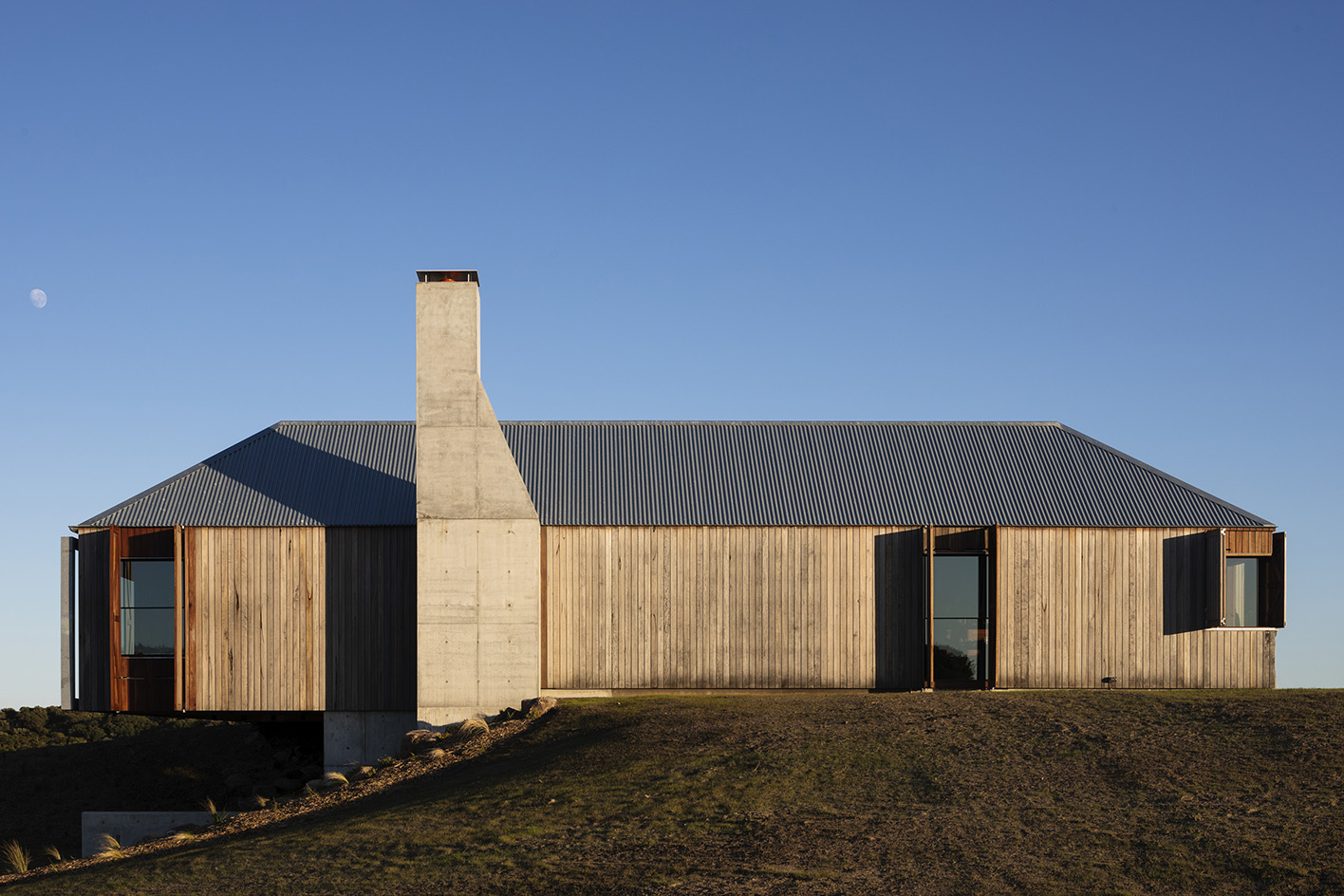
Bass Coast Farmhouse by John Wardle Architects is a fitting addition to the Melbourne-based architecture studio’s long tradition of immaculate rural dwellings. Situated in a coastal spot in south-west Victoria, the land of which the Boon Wurrung people have been the Traditional Custodians, the project is a family home in the countryside. 'It is a farmhouse, pure and simple,' the architects write among their key design 'rules' – other guiding principles in the process included the desire for a concrete floor, different types of windows, and a defining undercroft.
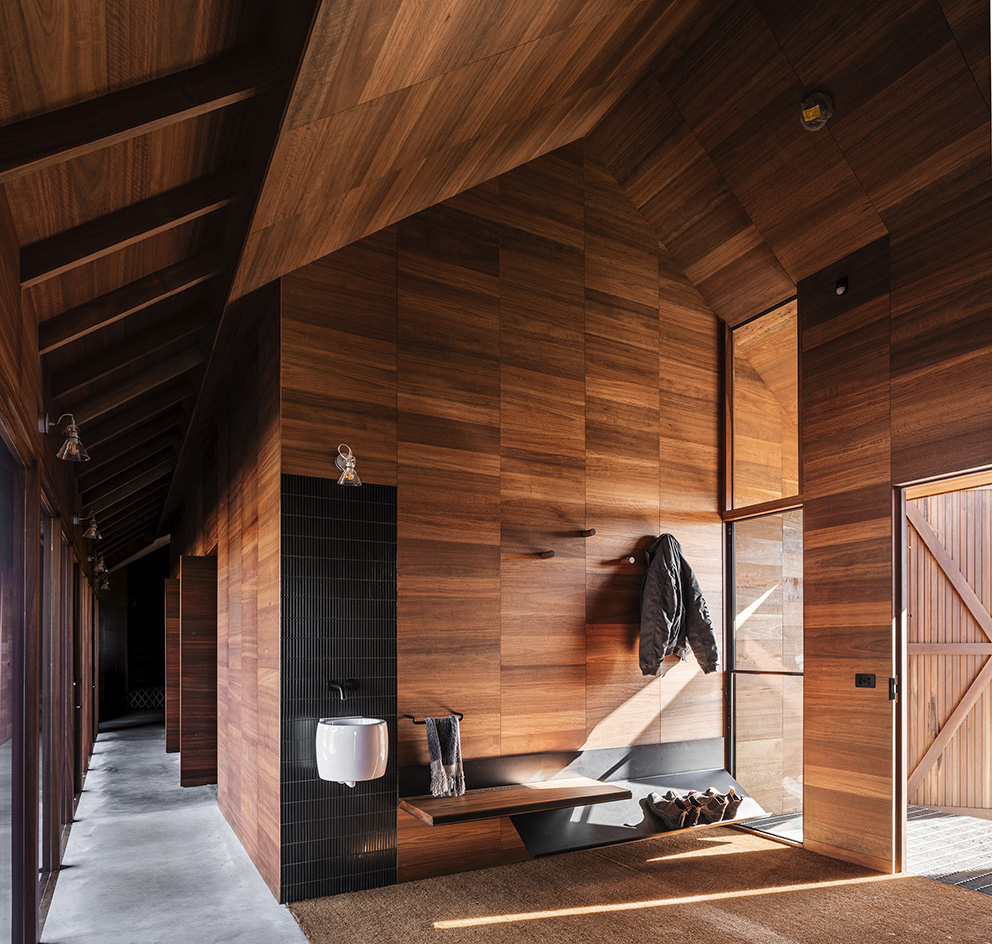
Bass Coast Farmhouse: the exterior
From a distance, the two-storey house appears simple, reduced to a minimalist, abstract outline of an archetypal farmhouse building. However, move closer and the drama of this elaborately designed home unfolds. The structure's corrugated iron roof, timber walls and a single chimney wrap a tactile and expressive interior, clad in timber, and revealed upon entering via the undercroft's visible gabled roof structure and approach bridge.
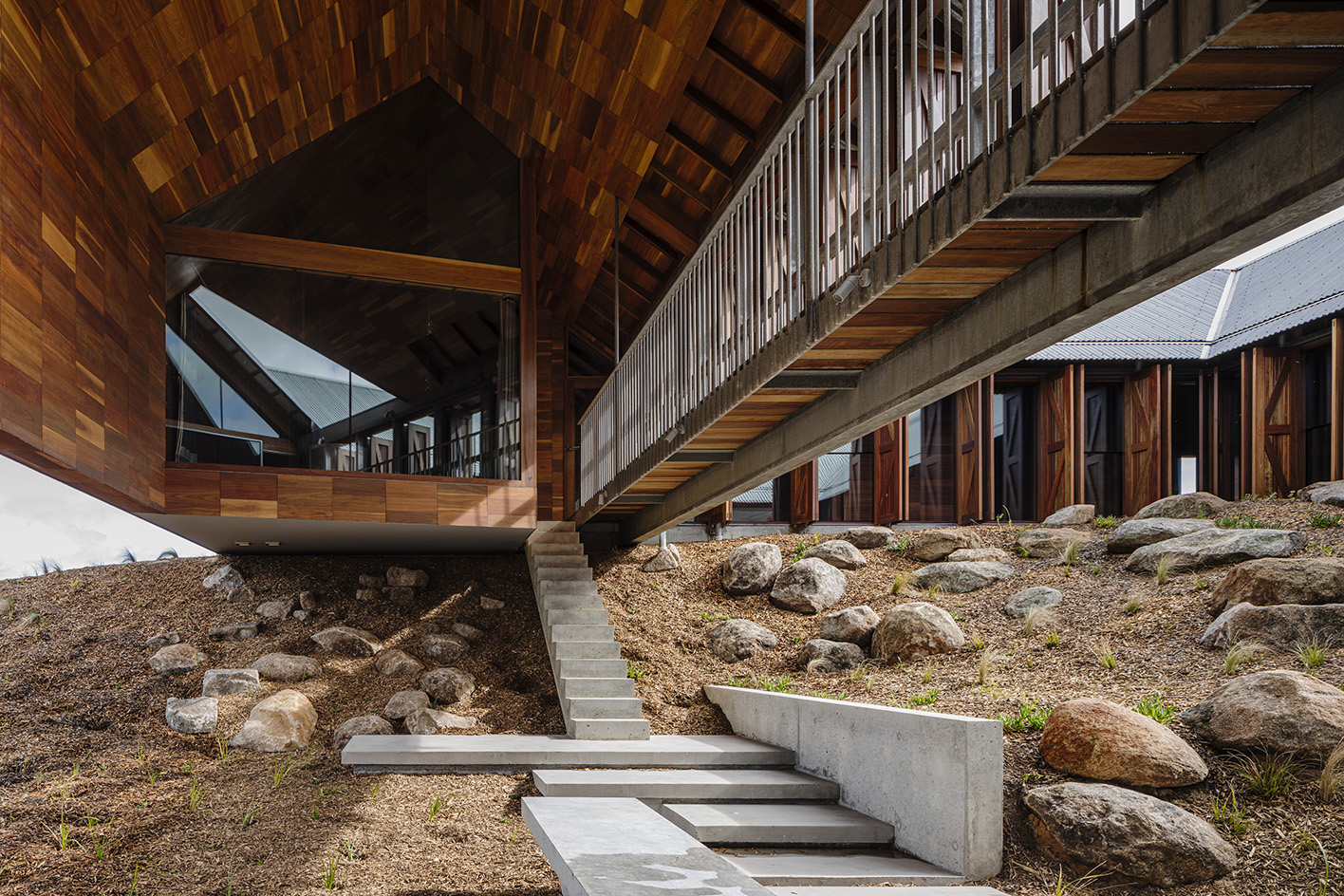
The house has been conceived as a powerful response to its landscape and terrain. It cantilevers over a rise and connects with the ground elsewhere, drawing on the undulating land around it. It also offers access to walking tracks linking it to the nearby ocean beach – Bass Strait.
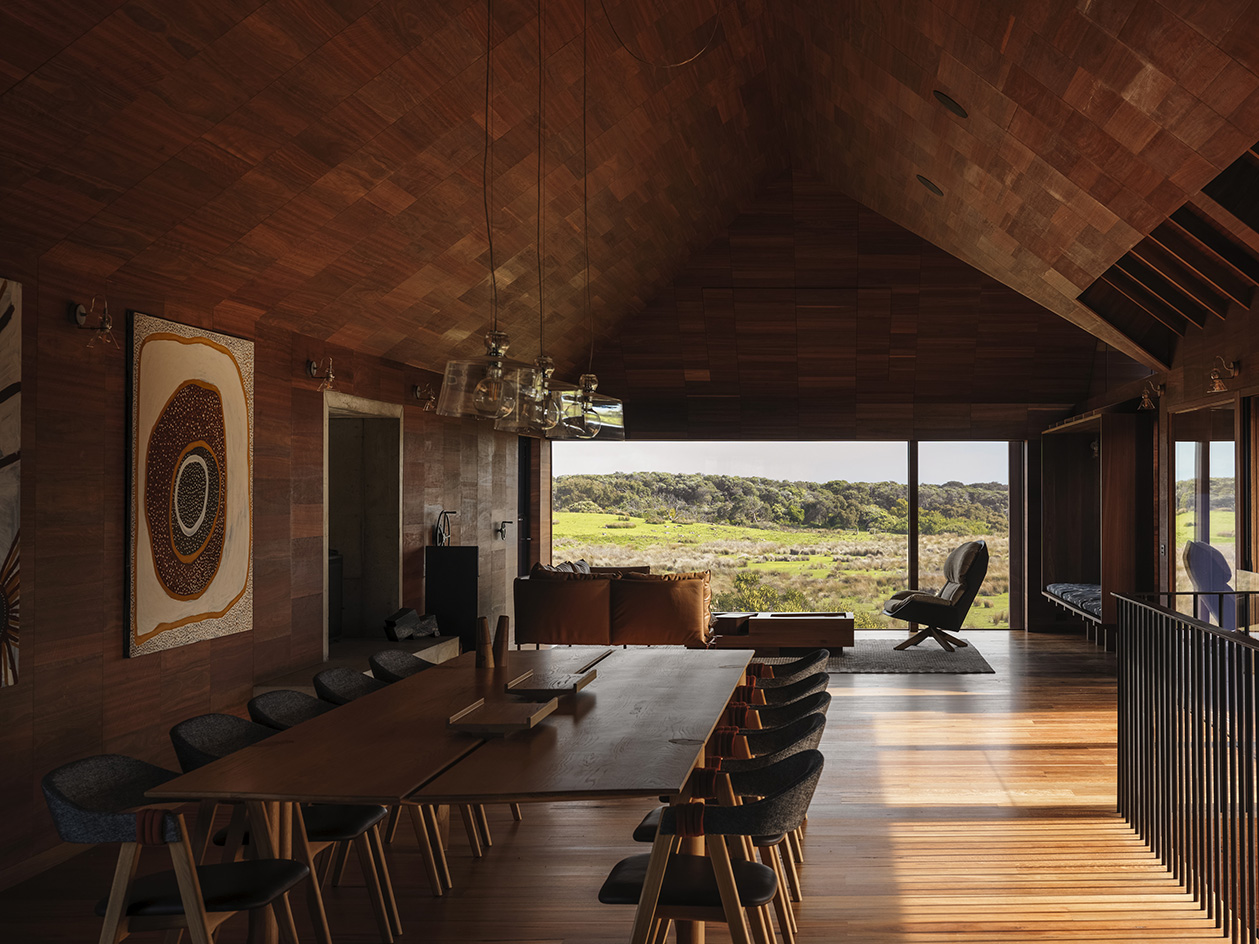
Bass Coast Farmhouse: the interior
Bass Coast Farmhouse's lower level hosts laundry, cellar and storeroom spaces, and an outdoor kitchen and dining area. Upstairs is the main living space, opening up to striking, long vistas. Combining rooms for both sleeping and withdrawing, and socialising, it features large openings that frame the nature around it.

Drama aside, at its heart, the structure remains a functional agricultural home. The architects write: 'The farmhouse remains faithful to the building language of rural structures with a façade of timber and galvanised steel roofing. External timber shutters close the house to the elements and provide privacy and protection when the home is uninhabited.
‘Timber is used extensively to line walls, floors and ceilings. The limited palette of interior materials features blackened steel and glazed tiles. Glazing is minimal, with only three types of windows in the house – a design rule that ensures natural ventilation to all spaces.'
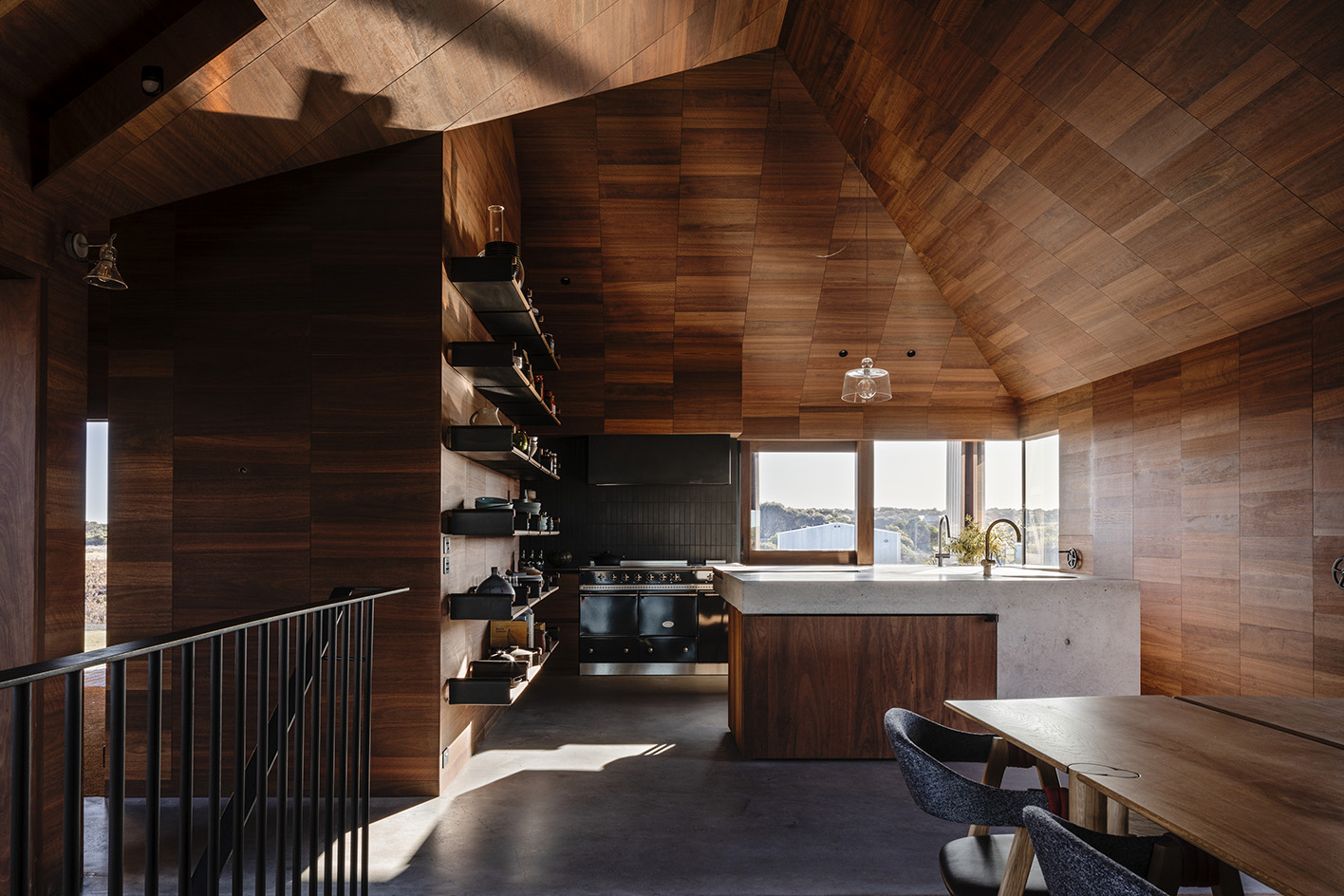
Adding to its connection to nature – represented through location, materials and visual links – the home also features strong sustainability credentials, as it is created to be entirely off-grid, robust, but also gentle in its spatial relationships.
Receive our daily digest of inspiration, escapism and design stories from around the world direct to your inbox.
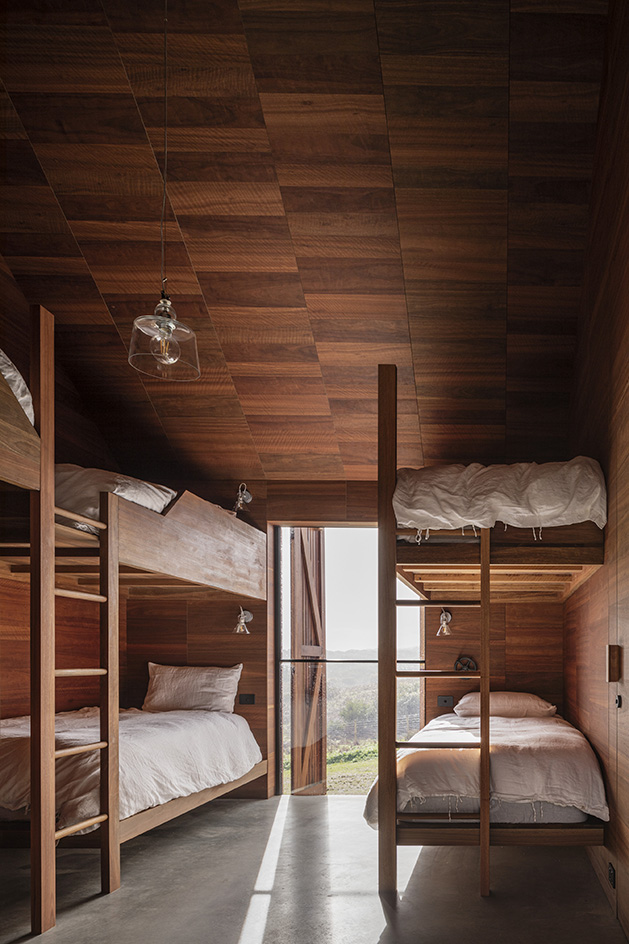
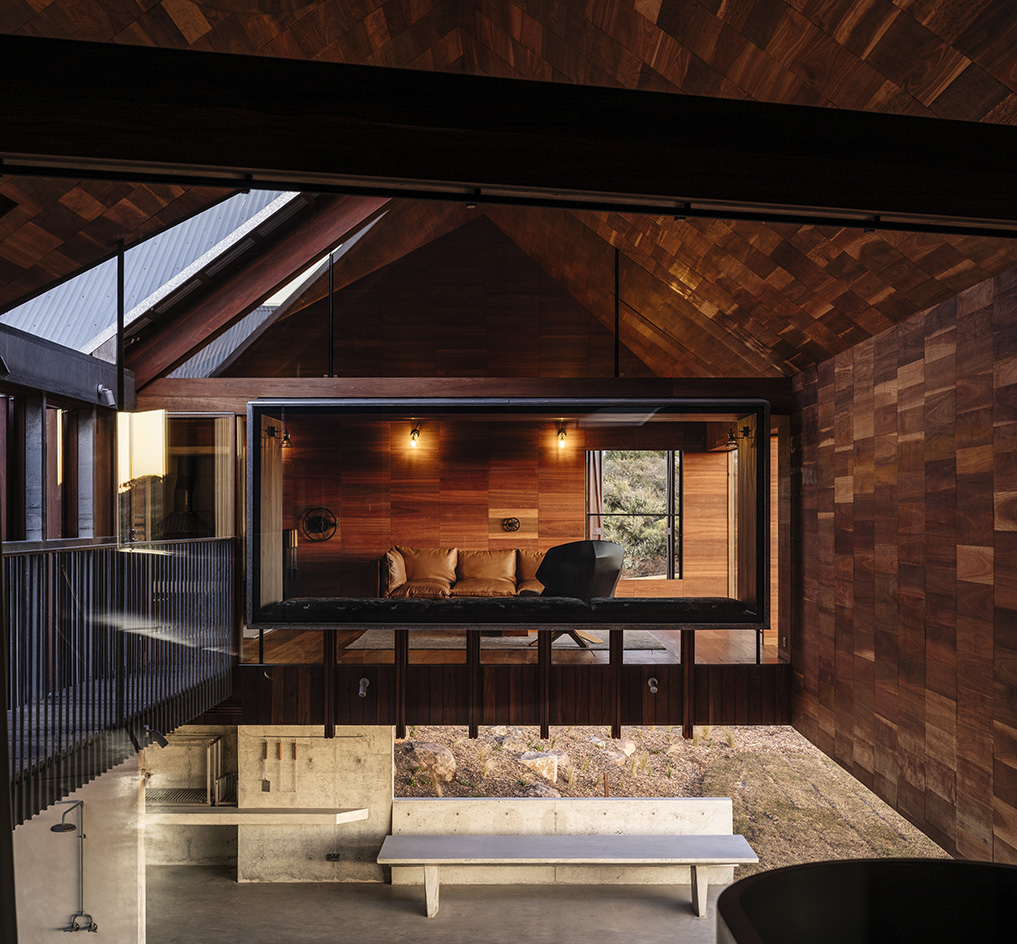
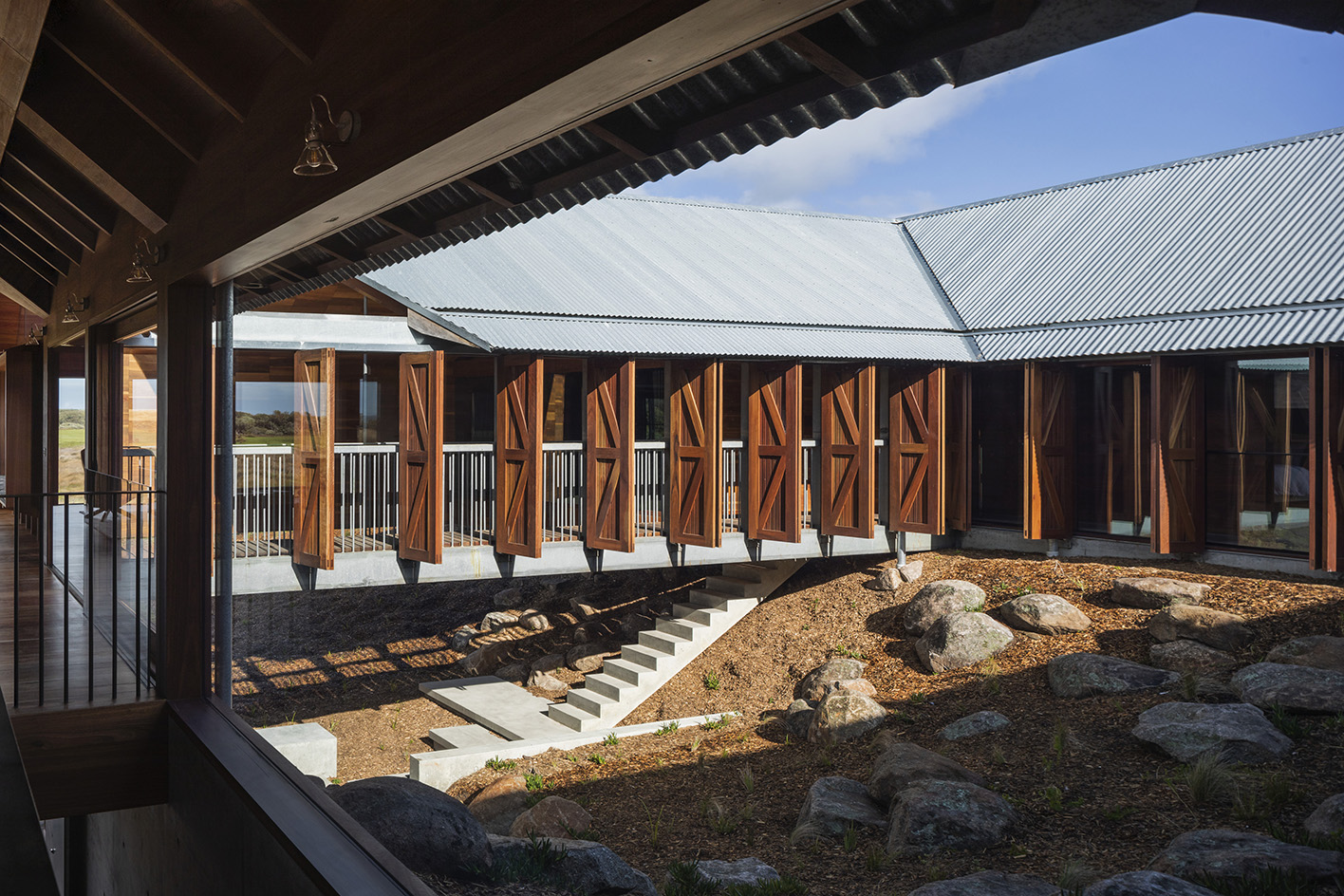
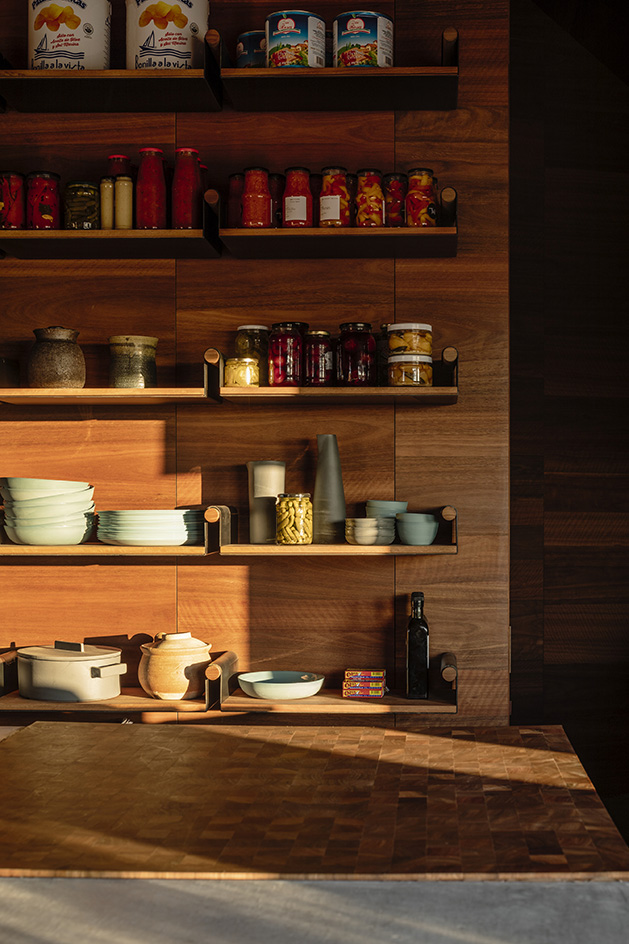

Ellie Stathaki is the Architecture & Environment Director at Wallpaper*. She trained as an architect at the Aristotle University of Thessaloniki in Greece and studied architectural history at the Bartlett in London. Now an established journalist, she has been a member of the Wallpaper* team since 2006, visiting buildings across the globe and interviewing leading architects such as Tadao Ando and Rem Koolhaas. Ellie has also taken part in judging panels, moderated events, curated shows and contributed in books, such as The Contemporary House (Thames & Hudson, 2018), Glenn Sestig Architecture Diary (2020) and House London (2022).
-
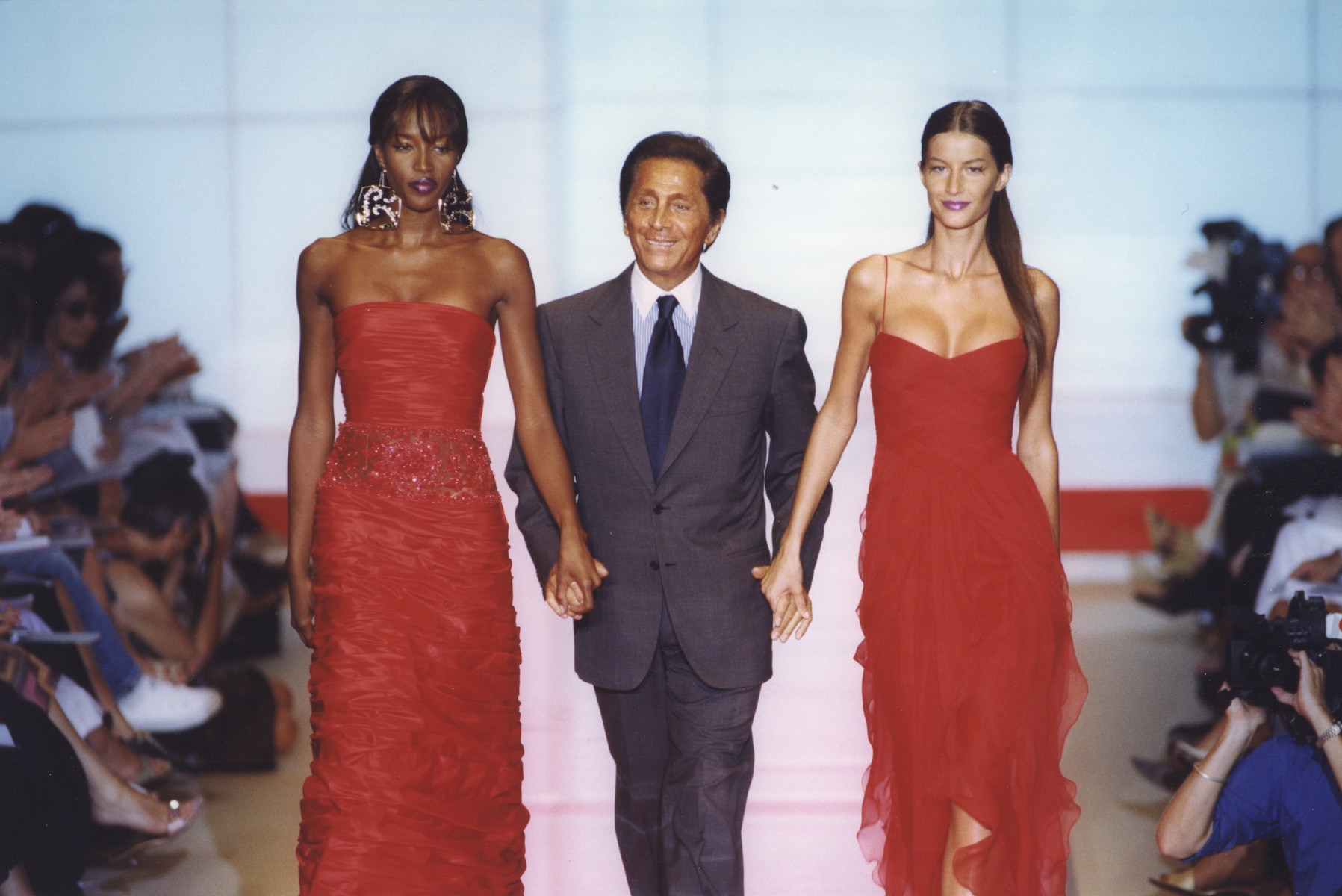 Remembering Valentino Garavani, master of Italian glamour (1932-2026)
Remembering Valentino Garavani, master of Italian glamour (1932-2026)‘The Last Emperor’ of fashion has passed away aged 93, it has been announced by his eponymous foundation today (19 January 2026). He will be remembered for his expressive vision of Roman glamour and cinematic muses
-
 The design reissues we loved from Paris Design Week
The design reissues we loved from Paris Design WeekWe bring you the best contemporary interpretations of historic design, fresh from Paris Design Week 2026
-
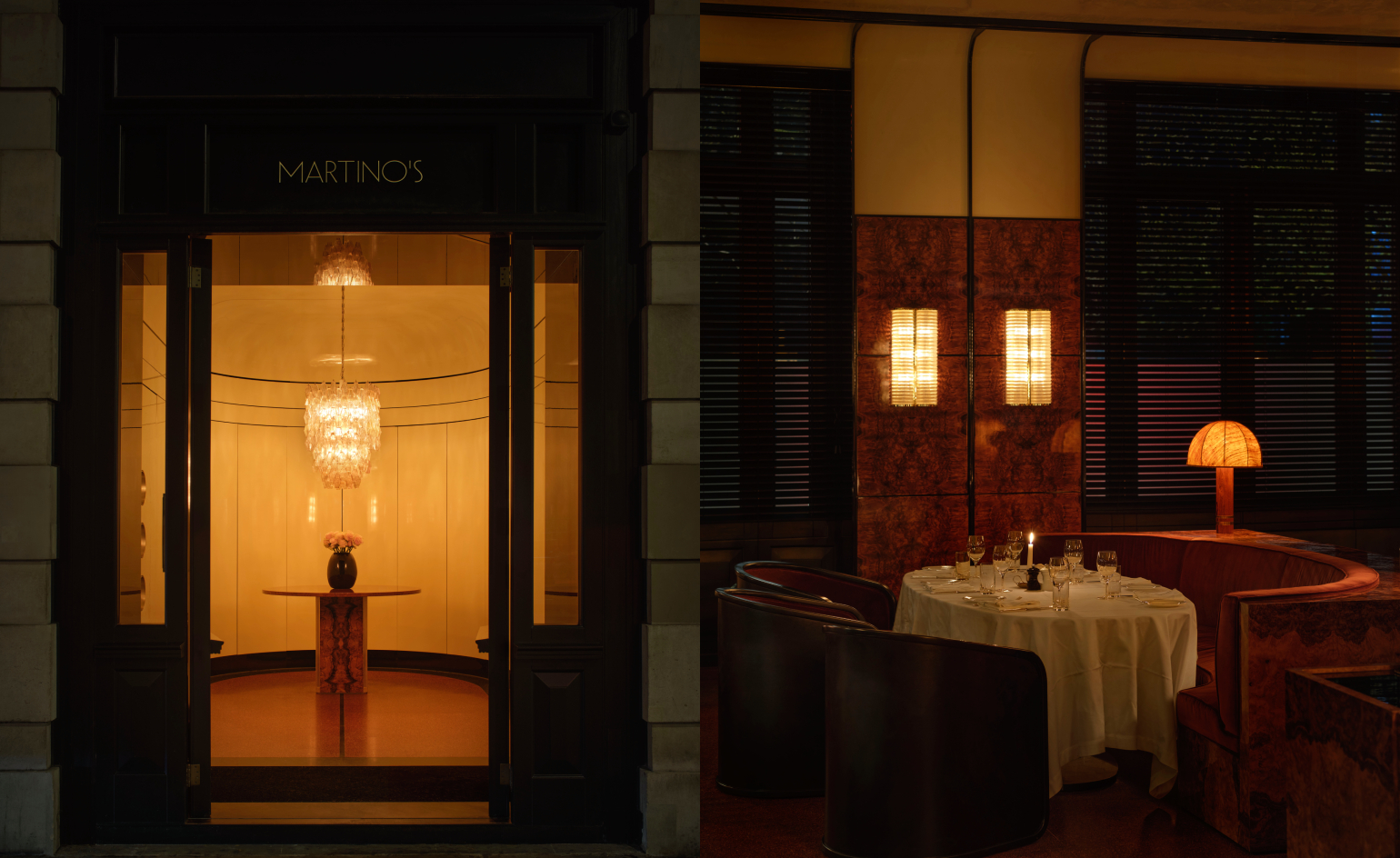 Martin Kuczmarski’s new London restaurant is made for long lunches and late nights
Martin Kuczmarski’s new London restaurant is made for long lunches and late nightsFrom the founder of The Dover comes Martino’s: a softly lit Italian trattoria in Sloane Square, where appetite, atmosphere and romance are inseparable
-
 The Architecture Edit: Wallpaper’s houses of the month
The Architecture Edit: Wallpaper’s houses of the monthFrom wineries-turned-music studios to fire-resistant holiday homes, these are the properties that have most impressed the Wallpaper* editors this month
-
 An Australian holiday home is designed as a bushfire-proof sanctuary
An Australian holiday home is designed as a bushfire-proof sanctuary‘Amongst the Eucalypts’ by Jason Gibney Design Workshop (JGDW) rethinks life – and architecture – in fire-prone landscapes, creating a minimalist holiday home that’s meant to last
-
 Neometro is the Australian developer creating homes its founders ‘would be happy living in’
Neometro is the Australian developer creating homes its founders ‘would be happy living in’The company has spent 40 years challenging industry norms, building design-focused apartment buildings and townhouses; a new book shares its stories and lessons learned
-
 The Melbourne studio rewilding cities through digital-driven landscape design
The Melbourne studio rewilding cities through digital-driven landscape design‘There's a lack of control that we welcome as designers,’ say Melbourne-based landscape architects Emergent Studios
-
 A Republic Tower apartment refresh breathes new life to a Melbourne classic
A Republic Tower apartment refresh breathes new life to a Melbourne classicLocal studio Multiplicity's refresh signals a new turn for an iconic Melbourne landmark
-
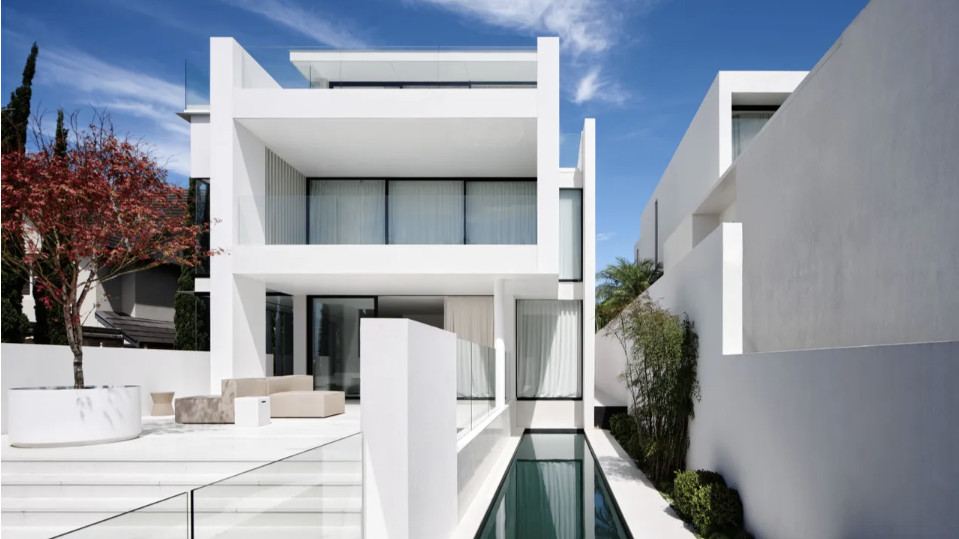 A Japanese maple adds quaint charm to a crisp, white house in Sydney
A Japanese maple adds quaint charm to a crisp, white house in SydneyBellevue Hill, a white house by Mathieson Architects, is a calm retreat layered with minimalism and sophistication
-
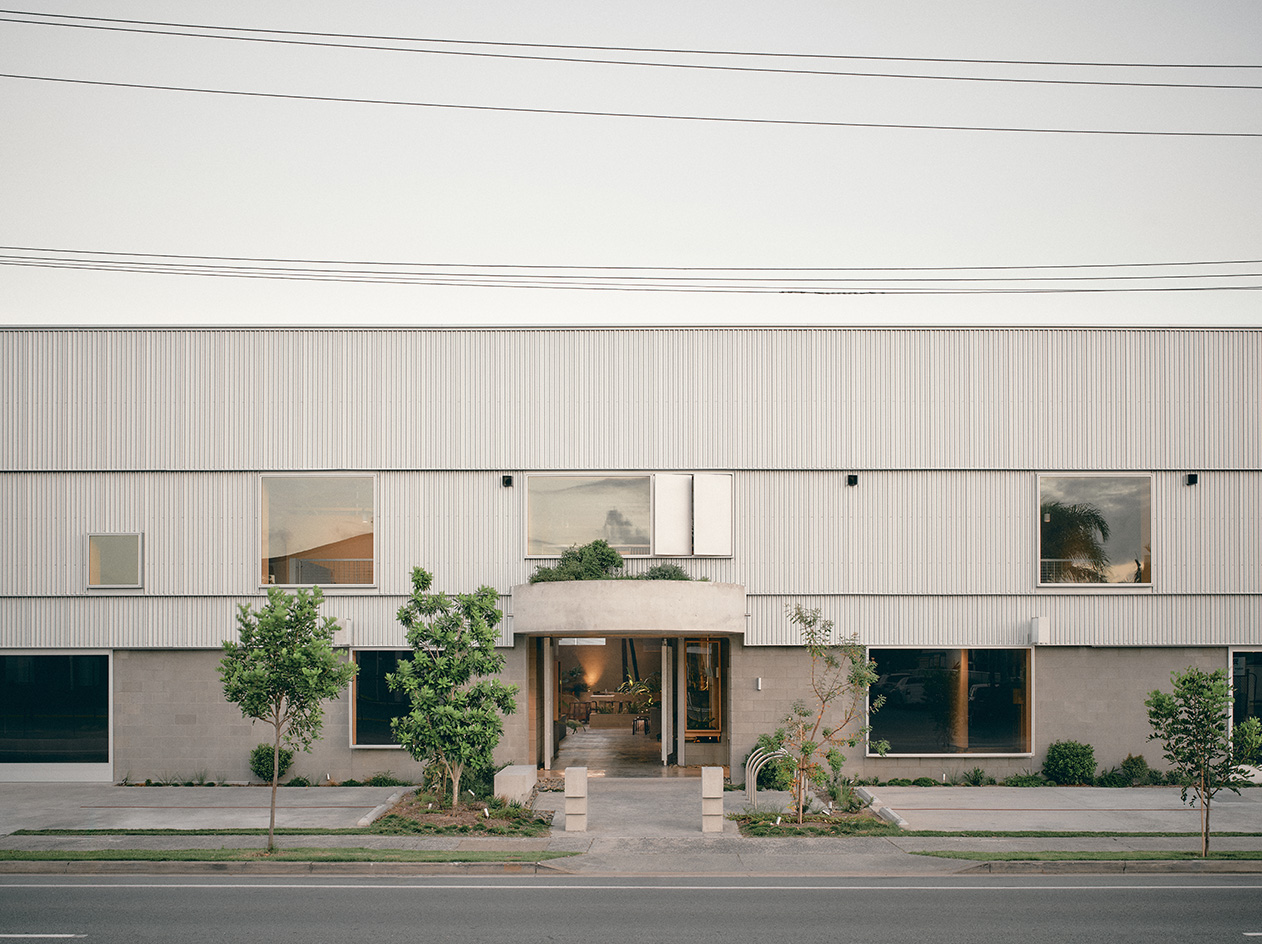 A redesigned warehouse complex taps into nostalgia in Queensland
A redesigned warehouse complex taps into nostalgia in QueenslandA warehouse in Queensland has been transformed from neglected industrial sheds to a vibrant community hub by architect Jared Webb, drawing on the typology's nostalgic feel
-
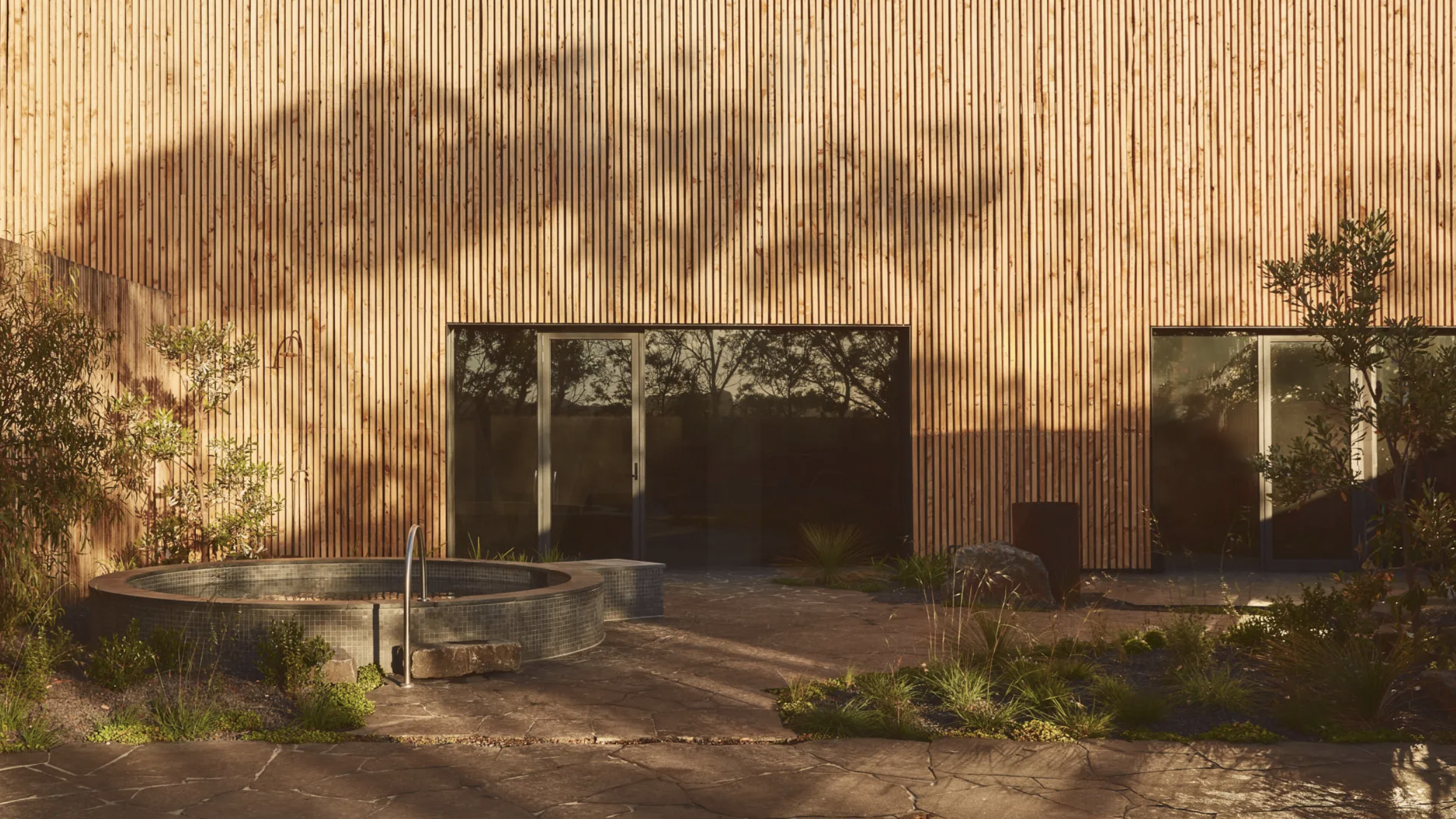 Australian bathhouse ‘About Time’ bridges softness and brutalism
Australian bathhouse ‘About Time’ bridges softness and brutalism‘About Time’, an Australian bathhouse designed by Goss Studio, balances brutalist architecture and the softness of natural patina in a Japanese-inspired wellness hub